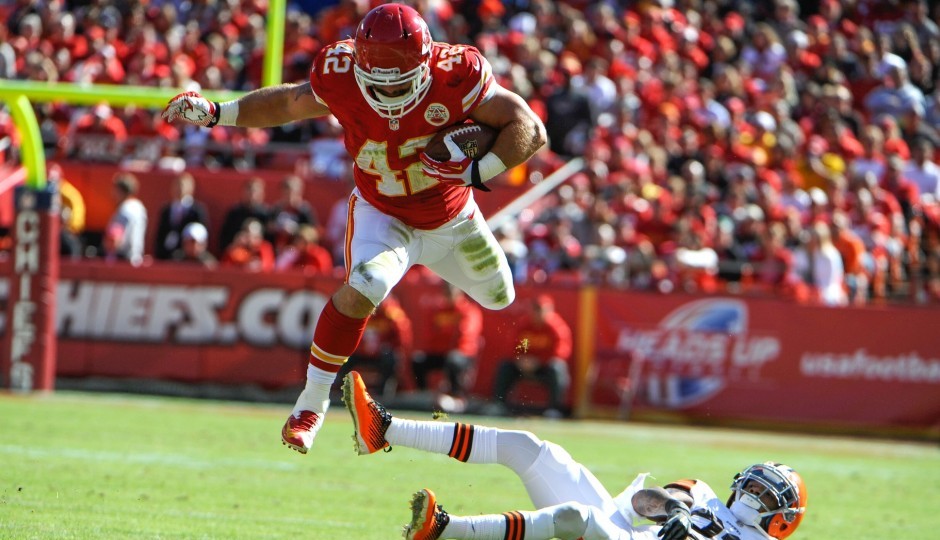Doug Pederson And the Fullback Factor

Anthony Sherman. (USA Today Sports)
Like many turn-of-the-century relics — the flip phone, dial-up internet, and Blockbuster, to name a few — the fullback has fallen by the wayside across the NFL. Fewer teams still use the bruising position.
But Doug Pederson? Well, Kansas City liked using fullbacks the past three seasons, and the Chiefs frequently relied on Anthony Sherman. Per Pro Football Focus, Sherman was on the field for 550 rushing snaps during his three years while Pederson was the offensive coordinator, while running the ball just five times himself.
His primary job was to get out ahead of the ball carrier and provide an extra body of protection, clearing the way for an offense that ranked in the top-10 in rushing yards each season. Sherman also served as a minor pass-catching threat out of the backfield, catching 36 passes for 265 yards and three touchdowns during those three seasons.
Interestingly enough, his role decreased as Pederson’s tenure went on: from 2013 to 2015, Sherman’s snap count was more than halved, from 419 to 206. But he still played a big role in the Chiefs’ ability to successfully run the ball after lead rusher Jamaal Charles went down early last season.
In 2015, the Eagles’ run game had its worst outing in Kelly’s three seasons by a wide margin. Newcomer DeMarco Murray struggled to find any semblance of footing in the offense, too often tackled before he could get to the line of scrimmage because of a weak offensive line and an offense somewhat ill-suited to his running style.
With Murray and fellow physical running back Ryan Mathews likely shouldering the load for another year, the inclusion of a fullback in Pederson’s 2016 iteration of the Eagles’ offense would be very interesting.
Much of Sherman’s value in the run game comes largely when he’s able to make more than one block on a single play, picking up the loose defenders that offensive linemen let slip through the cracks and ensuring the running back gets a shot at generating momentum and picking up a few yards.
Take, for example, this play from the Chiefs’ win over the Texans last year.
Here, Houston’s J.J. Watt gets a good jump off the snap, and a flat-footed Jah Reid, Kansas City’s right tackle wearing No. 75, is slow to react. As the play unfolds, Watt begins to shed Reid’s block, and without a fullback leading the way on this play, Jamaal Charles may be swallowed up in the backfield.
But as Sherman goes to meet his assignment, which is blocking Brian Cushing at the second level, he helps Reid out by stifling Watt’s attack long enough for Charles to get away from the danger, before moving on to blocking Cushing.
The idea of using a fullback in today’s pass-first, fast-paced NFL feels antiquated. But as Pederson and the Chiefs showed in the last three years, it can still be a good way to carve out space for your running backs.
For an Eagles team that couldn’t figure out how to run the ball last season, and with plenty of money and talent invested in the running back position, a fullback might provide the spark they need to run the ball effectively again in 2016.